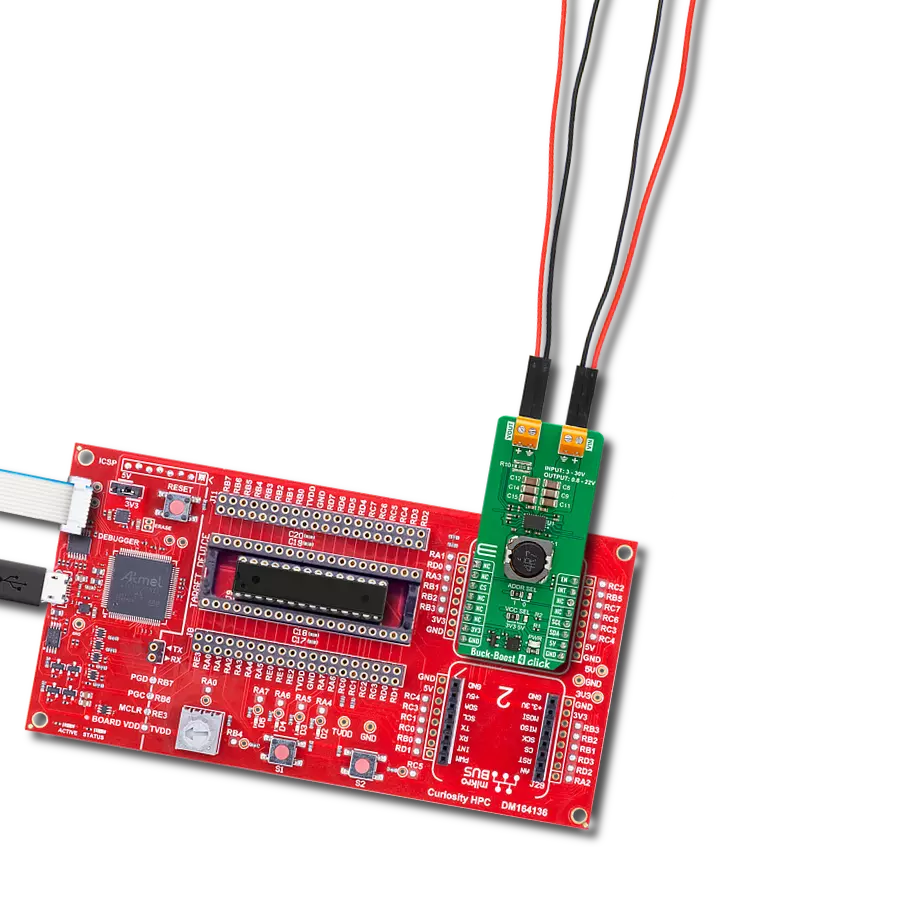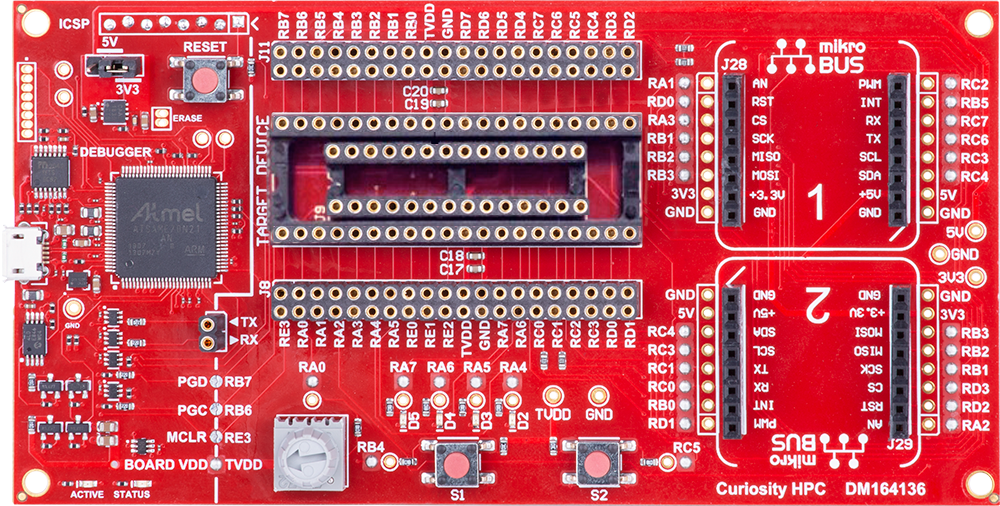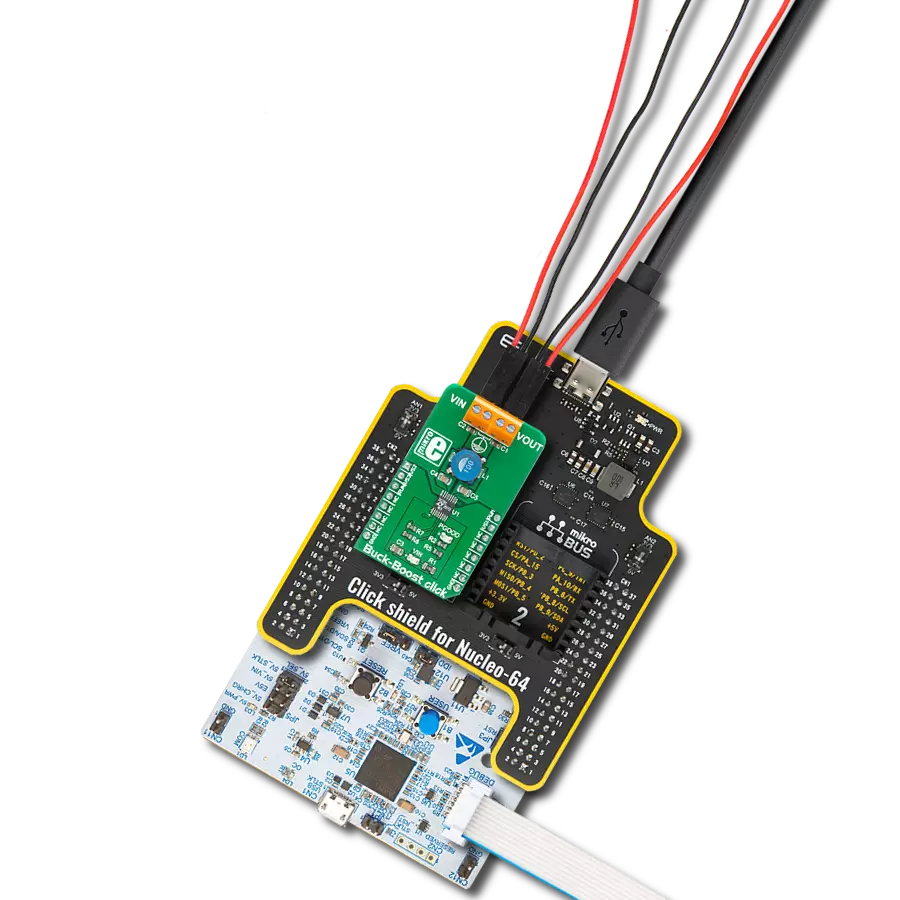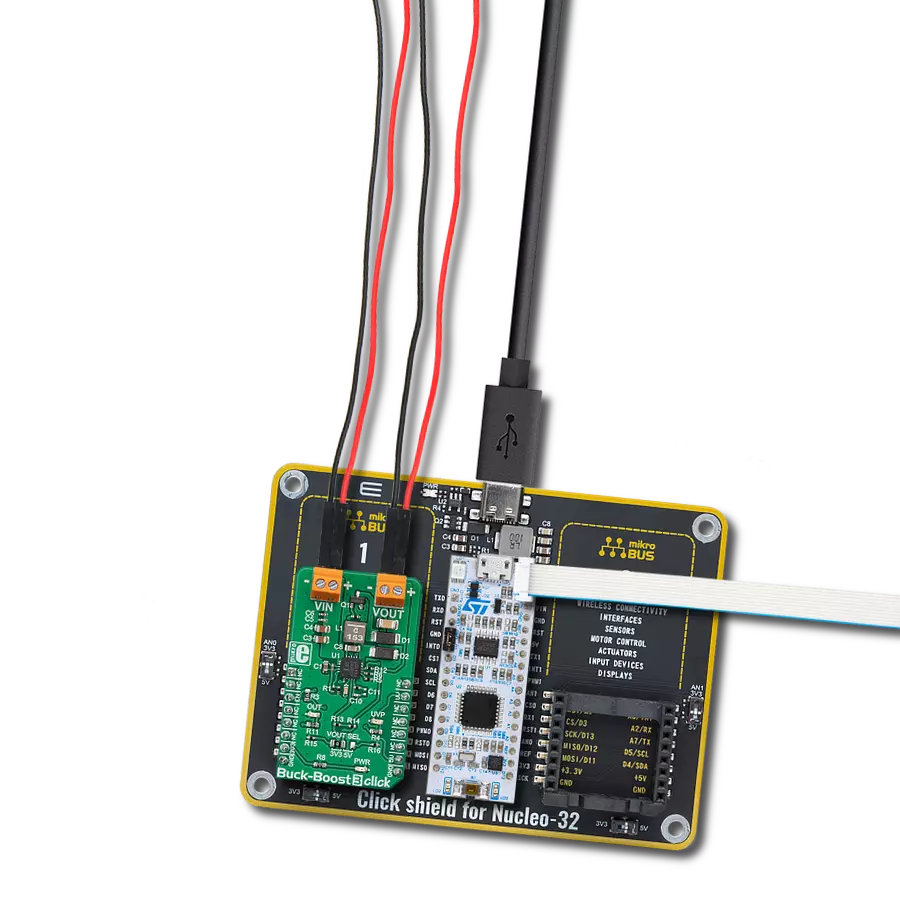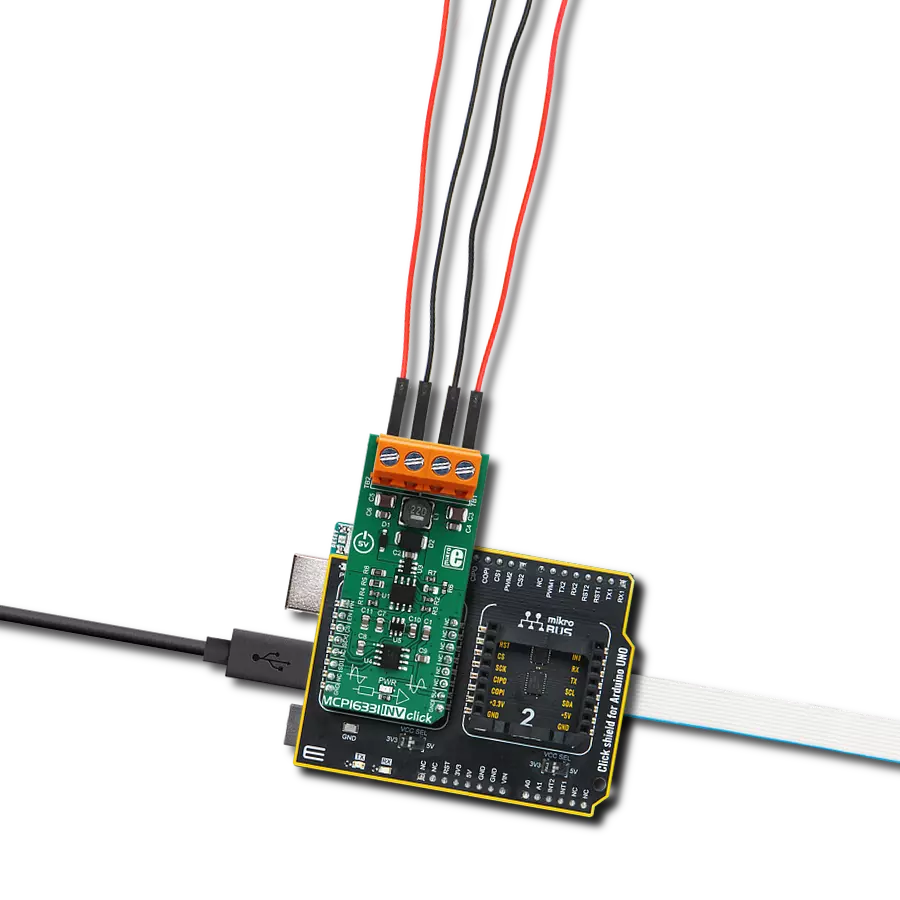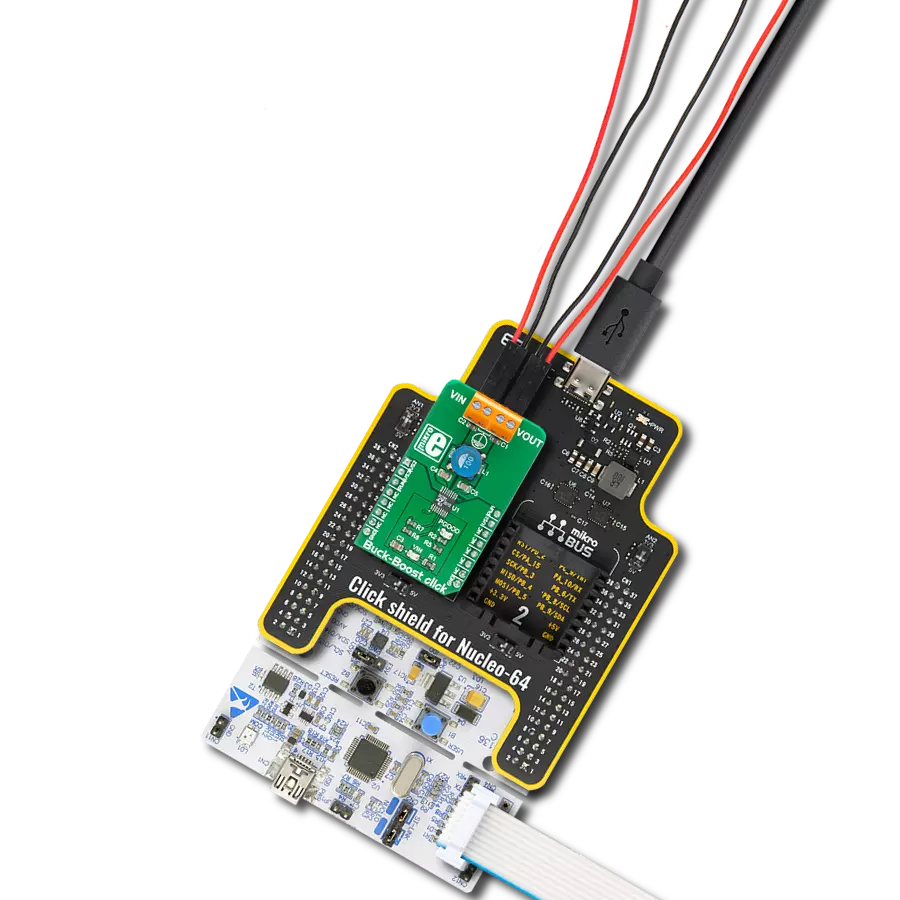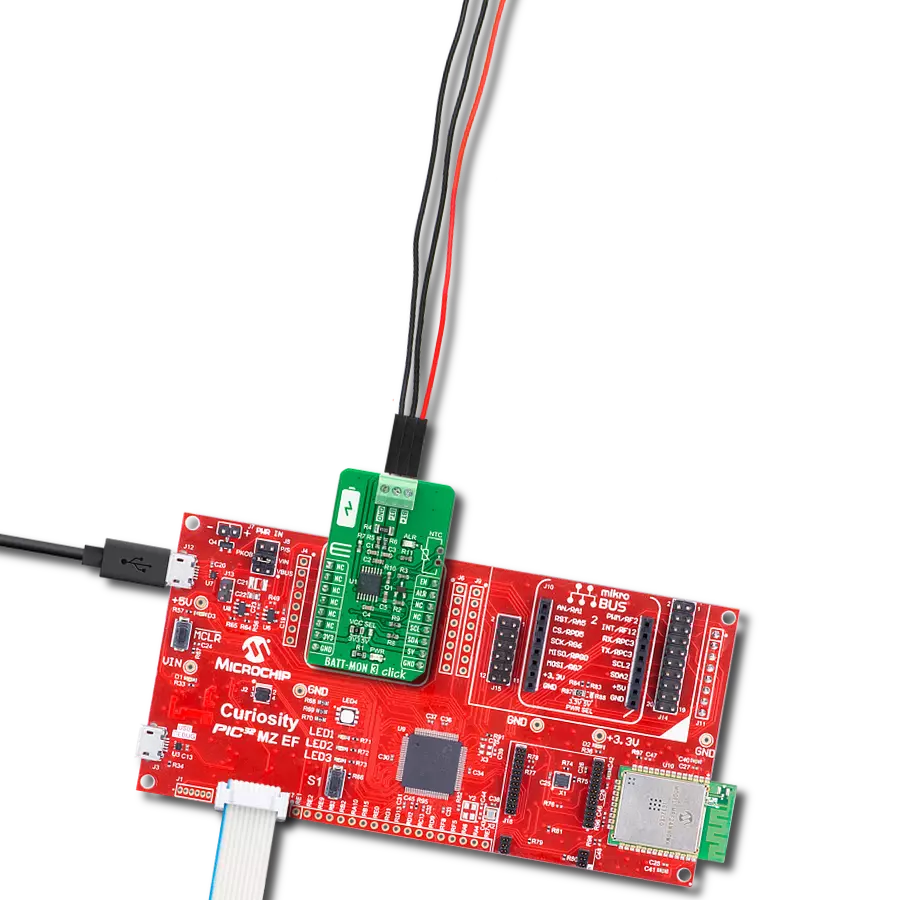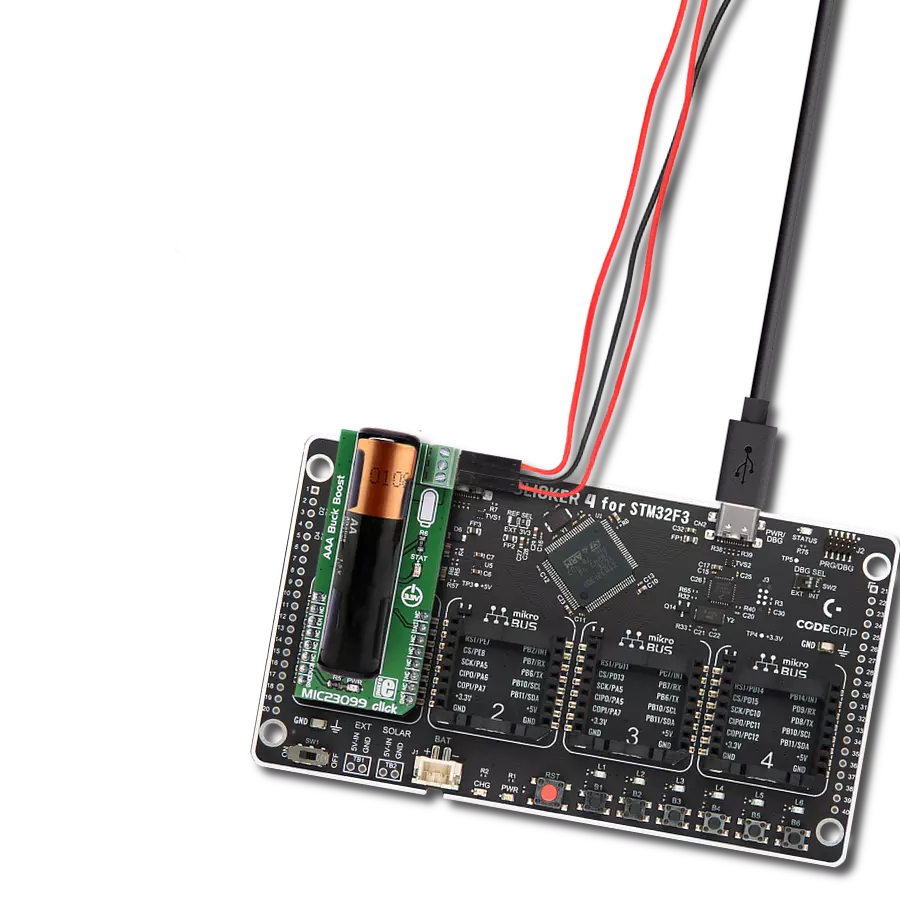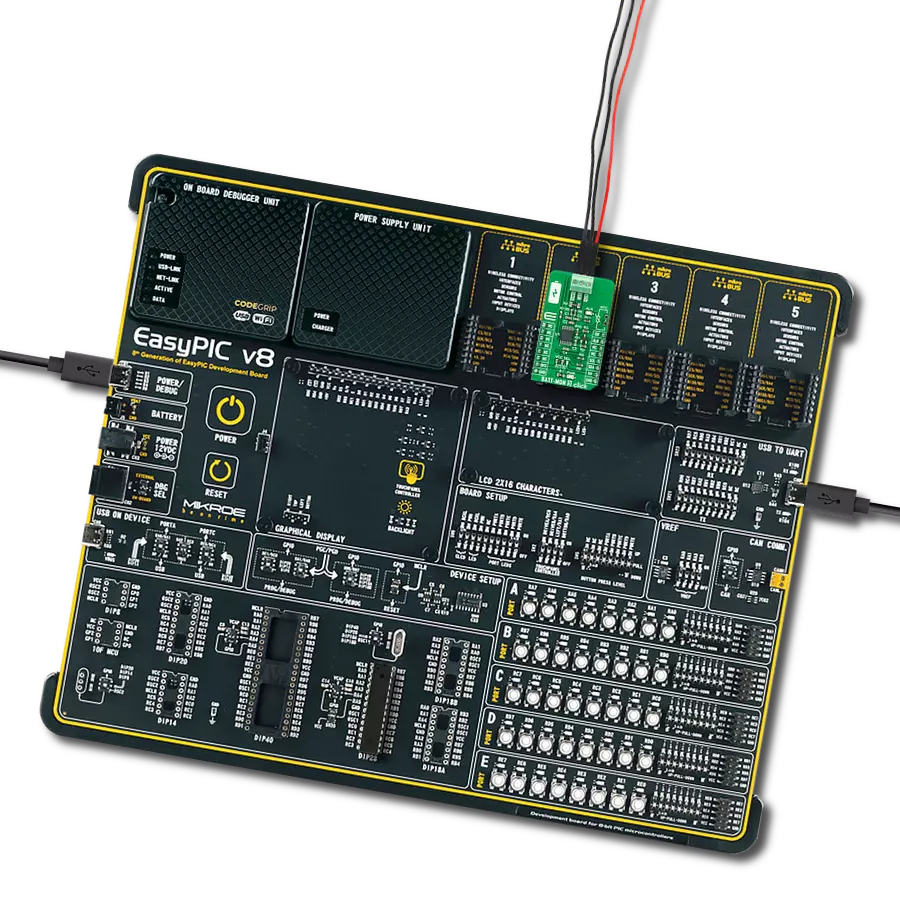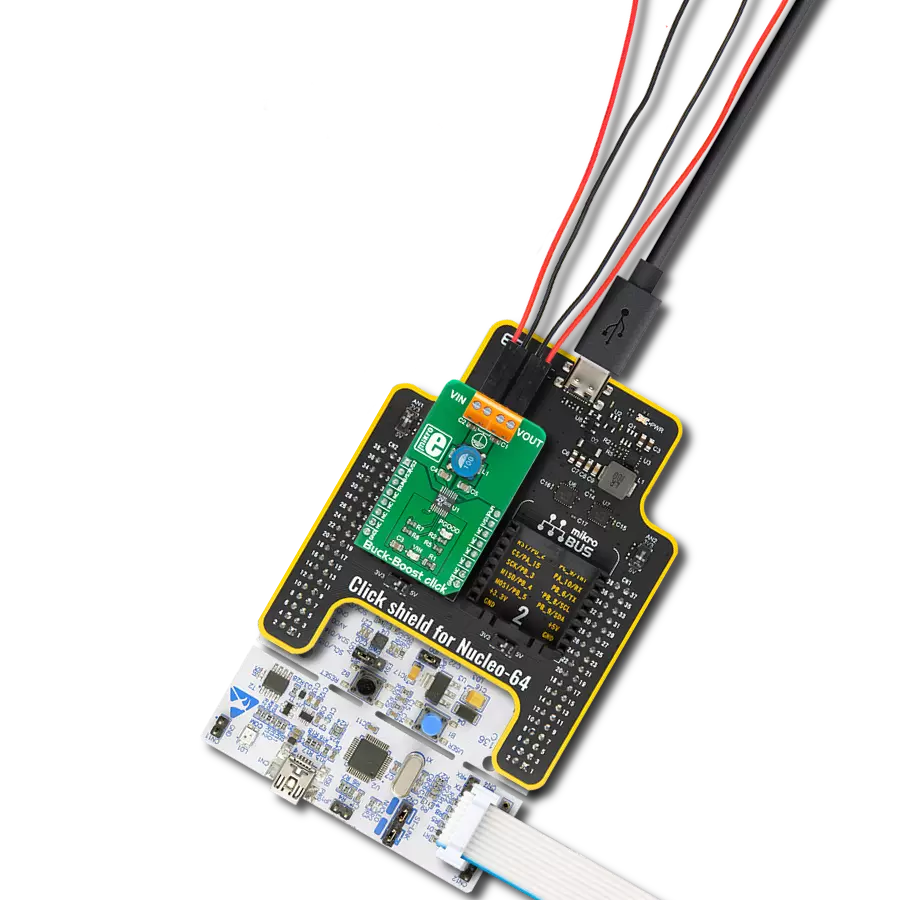Take in one voltage and convert it to a higher or lower voltage as needed, making it useful for various applications that require different power levels
A
A
Hardware Overview
How does it work?
Buck-Boost 4 Click is based on the TPS55289, a buck-boost converter from Texas Instruments. It can smoothly transition between buck mode, buck-boost mode, and boost mode according to the input voltage and the set output voltage. It operates in buck mode when the input voltage exceeds the output voltage and in boost mode when the input voltage is less than the input voltage. When the input voltage is close to the output voltage, it
alternates between one-cycle buck mode and one-cycle boost mode. The converter can work in PWM or PFM mode, depending on the load currents. The switching frequency is set with a resistor to a little less than 1MHz. Buck-Boost 4 Click uses a standard 2-wire I2C interface to communicate with the host MCU supporting clock frequency of up to 1MHz. The I2C address can be selected over the ADDR SEL jumper. You can turn off the device by
setting the EN pin to a LOW logic state. The fault indication is available over the INT pin. This Click board™ can operate with either 3.3V or 5V logic voltage levels selected via the VCC SEL jumper. This way, both 3.3V and 5V capable MCUs can use the communication lines properly. Also, this Click board™ comes equipped with a library containing easy-to-use functions and an example code that can be used for further development.
Features overview
Development board
Curiosity HPC, standing for Curiosity High Pin Count (HPC) development board, supports 28- and 40-pin 8-bit PIC MCUs specially designed by Microchip for the needs of rapid development of embedded applications. This board has two unique PDIP sockets, surrounded by dual-row expansion headers, allowing connectivity to all pins on the populated PIC MCUs. It also contains a powerful onboard PICkit™ (PKOB), eliminating the need for an external programming/debugging tool, two mikroBUS™ sockets for Click board™ connectivity, a USB connector, a set of indicator LEDs, push button switches and a variable potentiometer. All
these features allow you to combine the strength of Microchip and Mikroe and create custom electronic solutions more efficiently than ever. Each part of the Curiosity HPC development board contains the components necessary for the most efficient operation of the same board. An integrated onboard PICkit™ (PKOB) allows low-voltage programming and in-circuit debugging for all supported devices. When used with the MPLAB® X Integrated Development Environment (IDE, version 3.0 or higher) or MPLAB® Xpress IDE, in-circuit debugging allows users to run, modify, and troubleshoot their custom software and hardware
quickly without the need for additional debugging tools. Besides, it includes a clean and regulated power supply block for the development board via the USB Micro-B connector, alongside all communication methods that mikroBUS™ itself supports. Curiosity HPC development board allows you to create a new application in just a few steps. Natively supported by Microchip software tools, it covers many aspects of prototyping thanks to many number of different Click boards™ (over a thousand boards), the number of which is growing daily.
Microcontroller Overview
MCU Card / MCU
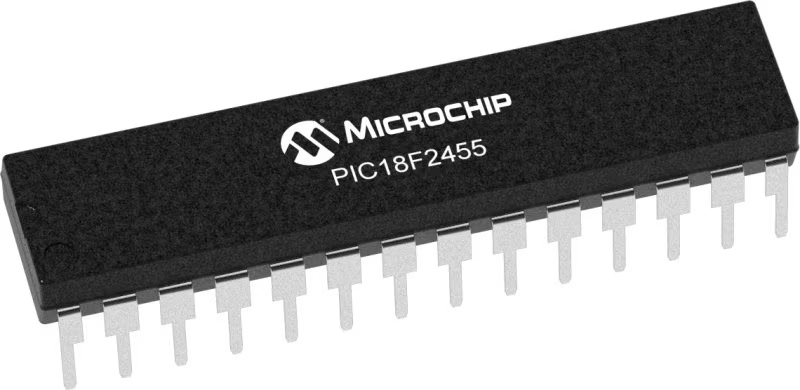
Architecture
PIC
MCU Memory (KB)
24
Silicon Vendor
Microchip
Pin count
28
RAM (Bytes)
2048
Used MCU Pins
mikroBUS™ mapper
Take a closer look
Click board™ Schematic
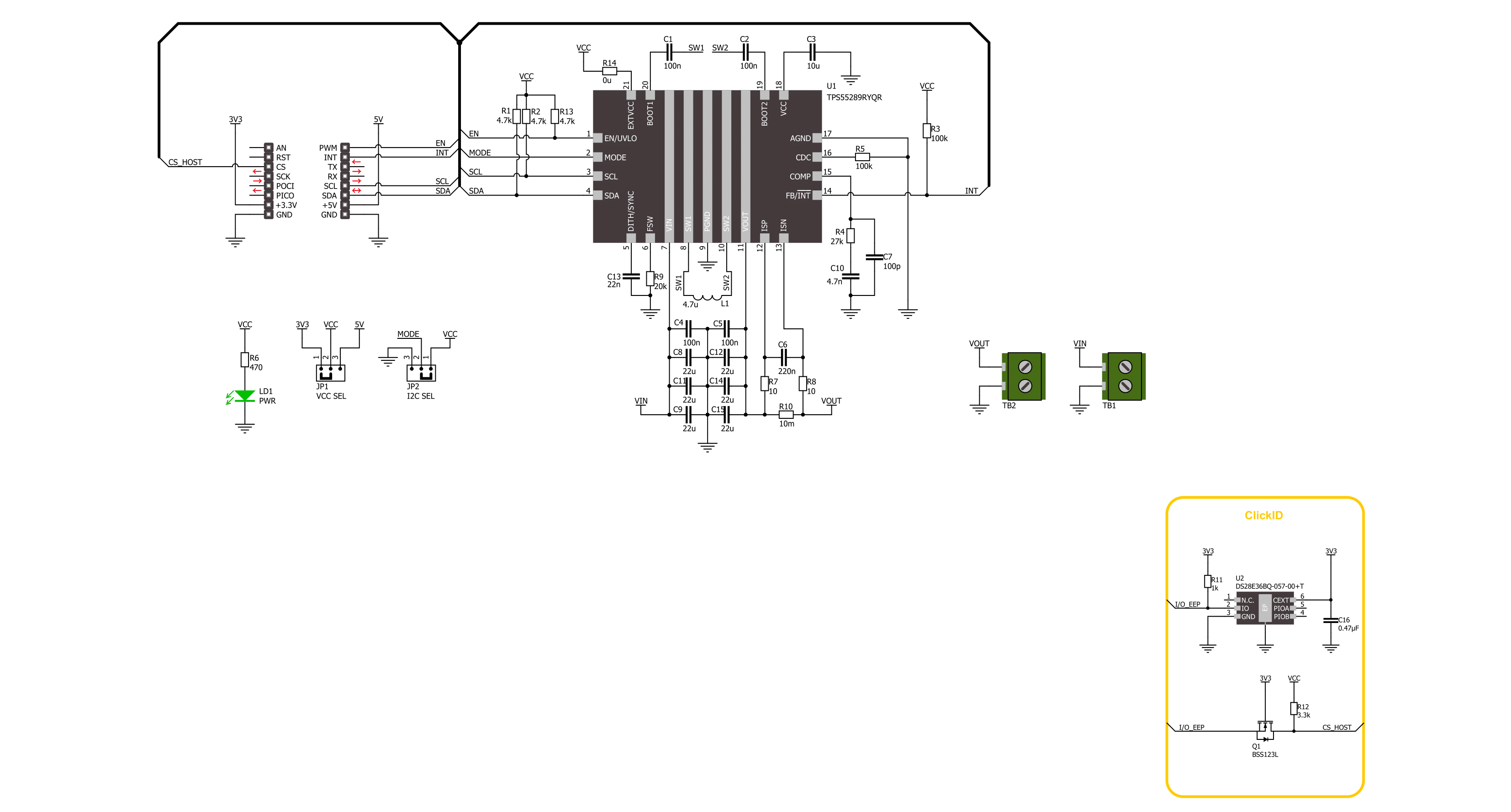
Step by step
Project assembly
Software Support
Library Description
This library contains API for Buck-Boost 4 Click driver.
Key functions:
buckboost4_set_vout- Buck-Boost 4 set the output voltage functionbuckboost4_set_vref- Buck-Boost 4 set internal reference voltage functionbuckboost4_fault_indicator- Buck-Boost 4 check fault indicator function
Open Source
Code example
The complete application code and a ready-to-use project are available through the NECTO Studio Package Manager for direct installation in the NECTO Studio. The application code can also be found on the MIKROE GitHub account.
/*!
* @file main.c
* @brief Buck-Boost 4 Click example
*
* # Description
* This example demonstrates the use of the Buck-Boost 4 Click board™.
* This driver provides functions for device configurations and for the output voltage setting.
*
* The demo application is composed of two sections :
*
* ## Application Init
* Initialization of I2C module and log UART.
* After driver initialization, the app executes a default configuration.
*
* ## Application Task
* The demo application sets the desired output voltage
* by cycling through a couple of voltage values.
* Results are sent to the UART Terminal, where you can track their changes.
*
* @author Nenad Filipovic
*
*/
#include "board.h"
#include "log.h"
#include "buckboost4.h"
static buckboost4_t buckboost4;
static log_t logger;
void application_init ( void )
{
log_cfg_t log_cfg; /**< Logger config object. */
buckboost4_cfg_t buckboost4_cfg; /**< Click config object. */
/**
* Logger initialization.
* Default baud rate: 115200
* Default log level: LOG_LEVEL_DEBUG
* @note If USB_UART_RX and USB_UART_TX
* are defined as HAL_PIN_NC, you will
* need to define them manually for log to work.
* See @b LOG_MAP_USB_UART macro definition for detailed explanation.
*/
LOG_MAP_USB_UART( log_cfg );
log_init( &logger, &log_cfg );
log_info( &logger, " Application Init " );
// Click initialization.
buckboost4_cfg_setup( &buckboost4_cfg );
BUCKBOOST4_MAP_MIKROBUS( buckboost4_cfg, MIKROBUS_1 );
if ( I2C_MASTER_ERROR == buckboost4_init( &buckboost4, &buckboost4_cfg ) )
{
log_error( &logger, " Communication init." );
for ( ; ; );
}
if ( BUCKBOOST4_ERROR == buckboost4_default_cfg ( &buckboost4 ) )
{
log_error( &logger, " Default configuration." );
for ( ; ; );
}
log_info( &logger, " Application Task " );
log_printf( &logger, "____________\r\n" );
Delay_ms ( 100 );
}
void application_task ( void )
{
for ( uint8_t vout = 1; vout < 21; vout++ )
{
if ( BUCKBOOST4_OK == buckboost4_set_vout( &buckboost4, ( float ) vout ) )
{
log_printf( &logger, " Vout: %dV\r\n", ( uint16_t ) vout );
Delay_ms ( 1000 );
Delay_ms ( 1000 );
Delay_ms ( 1000 );
Delay_ms ( 1000 );
Delay_ms ( 1000 );
}
}
log_printf( &logger, "____________\r\n" );
Delay_ms ( 1000 );
}
int main ( void )
{
/* Do not remove this line or clock might not be set correctly. */
#ifdef PREINIT_SUPPORTED
preinit();
#endif
application_init( );
for ( ; ; )
{
application_task( );
}
return 0;
}
// ------------------------------------------------------------------------ END
Additional Support
Resources
Category:Buck-Boost
